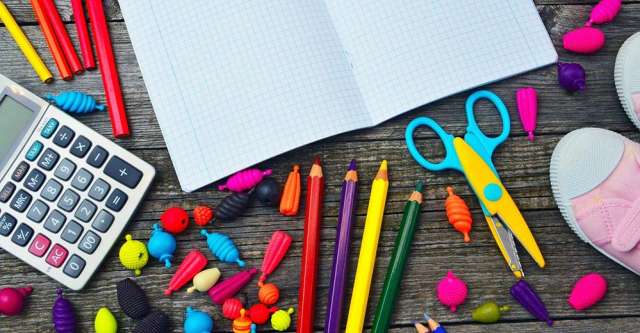We use a variety of supplies when it comes to school. Whether it is paper, pens, glue, erasers, or anything else, we use a lot of supplies. What you might not know is where they originated from.
Backpacks
We use backpacks to hold schoolbooks and our school supplies. Backpacks have been around since Abraham was alive. Isaac, Abraham’s son, had to carry the wood somehow when he went up the mountain to give a sacrifice. They were also used with Roman soldiers. The soldiers had to carry sixty to eighty pounds of equipment when they marched to battle
Ballpoint Pens
A thing we use every day is a pen. During World War II, the British Royal Air Force was wanting a pen that wouldn’t leak at high altitudes. A Hungarian journalist by the name of Laszlo Biro perfected a new pen design in 1938 by placing a ball bearing at the pen’s tip and using a thicker, more permanent ink.
Glue
When we make a craft, we often use glue to hold it together. When glue was first invented in 1750, it was made from fish. Glue was also made from boiled animal bones or hides, milk protein, natural rubber and starch. But by the 1990s, inventors started making glue from synthetic substances to get the glue more stickier. Now glue is made completely from man-made substances.
Erasers
Have you ever tried to erase something with a piece of bread? That’s what people in older times did- use a piece of bread as an eraser. In 1770, Sir Joseph Priestly found out that rubber marked out pencil marks. Since rubber rotted easily, it wasn’t the best eraser. It wasn’t until 1839 when Charles Goodyear accidentally dropped rubber and sulfur on a hot stove. Finally, in 1858, Hyman Lipman came up with the idea to attach the eraser to the end of a pencil.
Crayons
Edward Binney and Harold Smith came up with the idea of crayons. They first made crayons in the late 1800s, but it was too toxic to children. So they came up with the idea of using colored pigments into wax. It worked out! Now you have a variety crayon colors.
Paper
One of the things we just take for granted is paper. In the early 1770s, Rene-Antoine Ferchault de Reaumur observed that a wasp nest was made of paper. The wasps ate twigs and rotting logs which mixed with their saliva and stomach juices and produced paper. Years later, William Tower and Augustus Standwood made a machine that would, so to speak, digest the wood to make paper.
Next time you use one of the school supplies, think of how it was made.

